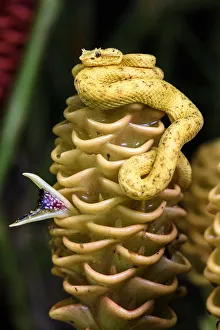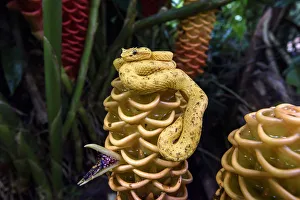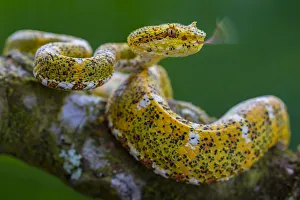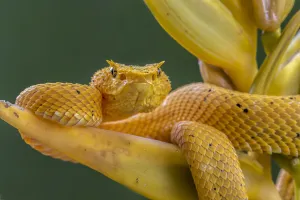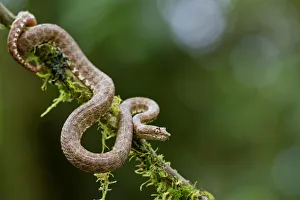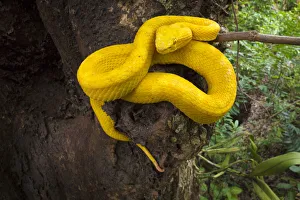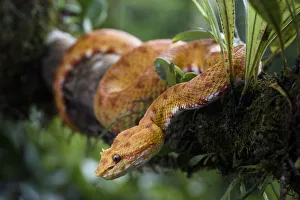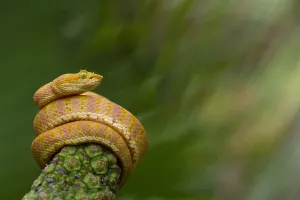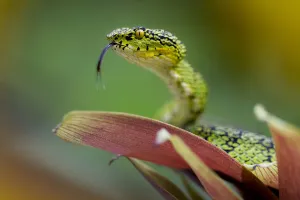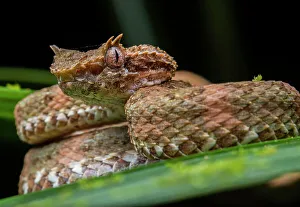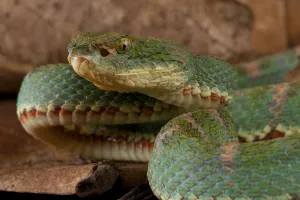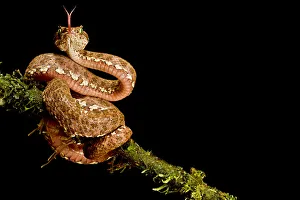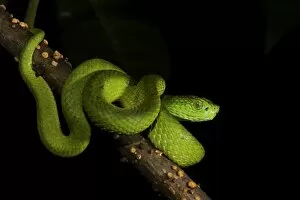Palm Viper Collection
The mesmerizing beauty of the palm viper, also known as the eyelash pit viper (Bothriechis schlegelii
All Professionally Made to Order for Quick Shipping
The mesmerizing beauty of the palm viper, also known as the eyelash pit viper (Bothriechis schlegelii), is captured in this stunning portrait taken on the Caribbean slope of Guatemala. With its distinctive yellow scales and piercing gaze, this venomous snake stands out among its surroundings in Izabal, Guatemala. In another captivating image, we witness the eyelash pit viper extending its tongue, flicking it delicately to taste the air. Its keen senses are finely tuned as it navigates through its lush habitat. Nature's artistry unfolds as we observe an eyelash viper patiently waiting on a vibrant Heliconia flower. The contrast between the serpent's vivid colors and the flower's delicate petals creates a breathtaking sight that showcases Mother Nature's creativity. Perched gracefully on a twig in Canande, Esmeraldas, Ecuador, this elegant creature demonstrates both power and poise. Its coiled body hints at potential danger while simultaneously showcasing its remarkable agility. A close encounter with an adult eyelash pit viper reveals intricate details of its scaly skin pattern within Costa Rica's rich biodiversity. This species serves as a reminder of nature's diverse tapestry and our responsibility to protect it. Found amidst Siquirres' enchanting landscapes in Limon, Costa Rica, another portrait captures the essence of this enigmatic reptile. Its intense gaze seems to hold secrets from centuries past while inviting us into a world unknown. Curled around a plant in Canande, Esmeraldas once again shows us how seamlessly these vipers blend into their environment. Their ability to camouflage themselves is truly awe-inspiring and serves as evidence of their remarkable adaptation skills. With tongue extended yet again but against a different backdrop - Mindo Pichincha - we see how versatile these creatures can be when it comes to finding sustenance or exploring their surroundings. Finally, we encounter an intriguing variation called oropel form, characterized by its distinctive yellow-orange hues.

